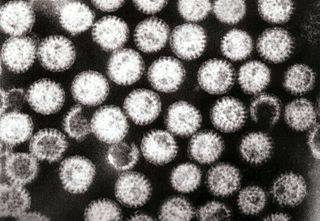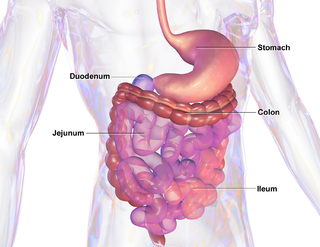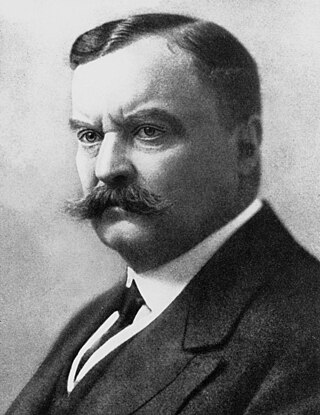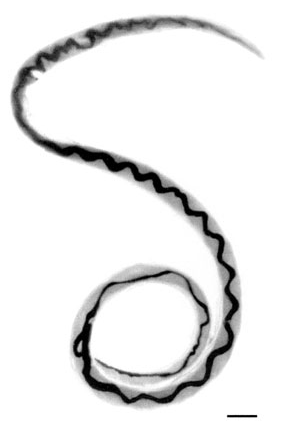George Stuart Graham-Smith (25 September 1875 - 30 August 1950) was a British pathologist and zoologist particularly noted for his work on flies, both as disease vectors, and as organisms of interest in their own right.
George Stuart Graham-Smith (25 September 1875 - 30 August 1950) was a British pathologist and zoologist particularly noted for his work on flies, both as disease vectors, and as organisms of interest in their own right.
Graham-Smith was the son of a colonel in the Indian Army. He attended Clifton College and then studied at Pembroke College, Cambridge, where he played a lot of cricket and graduated with a B.A. in 1897. He then studied medicine at Guy's Hospital, London, obtaining his M.B. B.Chir. in 1901. He returned to Cambridge, to the Department of Pathology, and took the Diploma in Public Health in 1902. In 1904 he became the John Lucas Walter student, a scholarship awarded for original research in pathology, and obtained his M.D. in 1905. [1]

In 1901, Graham-Smith was enrolled in a pathology class taught by Louis Cobbett in Cambridge. In the spring of that year there was a local outbreak of diphtheria, and the class followed the progress of Cobbett's work on identifying organisms from swabs, inoculating animals, and dealing with patients, doctors and sanitary inspectors. In the summer of the same year, there was an outbreak of diphthera in Colchester, and Graham-Smith went there as Cobbett's assistant. [3] [4] : 163 His work there was the basis for his first publication, which formed part of his M.D. Thesis. He describes the measures taken to deal with the outbreak, which included treatment with antitoxin, bacteriological testing of patients and contacts, isolation of patients until they were shown to be free of infection, and closure of schools followed by exclusion of infected pupils once they re-opened. The outbreak declined in the autumn of 1901. [2]
Graham-Smith continued to work on diphtheria for the next few years. In 1903 and 1904 he published two papers presenting evidence, both from a review of the literature and his own and Cobbett's work, on the incidence of infection in patients, contacts without symptoms, and those with no exposure, and on the implications of these findings for disease control measures. He emphasised the importance of testing the virulence of the bacilli found, as well as identification based on morphology and culture properties. He concluded that virulent strains were rarely found in healthy people without known contact with patients diagnosed with diphtheria, a finding that supported a policy based on isolating and testing diphtheria contacts. [5] [6]

During this period, Graham-Smith developed a close working relationship with George Nuttall, who had been appointed University Lecturer in Bacteriology and Preventive Medicine in 1900. [8] They co-edited The Bacteriology of Diphtheria, [9] which appeared in 1908, the first major work on this topic to be published in Britain. [1] Nuttall and Graham-Smith also worked together on a series of studies of canine Piroplasma canis, now known as Babesia canis , [10] a protozoan parasite that invades the red blood cells of dogs, and is transmitted by ticks. [11] [12] [13] [7] Schetters (2019), reviewing the literature on this parasite in dogs, re-tabulated Graham-Smith's data on morbid anatomy, and confirmed his key finding of an accumulation of infected red blood cells in the capillaries. [12] [14] Another infection of the blood was first described by Graham-Smith in moles. [15] The organism, a Gram-negative bacterium, was named Grahamella in his honour, but is now classified as Bartonella. [16]
Graham-Smith's work in straightforward zoology (i.e. not involving pathology) began with a collaboration with Nuttall on a project to assess the degree of relatededness between animal groups (blood relationships) on the basis of immunological cross-reactions between serum proteins. This work, published as Blood Immunity and Blood-Relationships in 1904 [17] represents the beginning of the modern field of molecular systematics. [18] Graham-Smith contributed section VIII: Blood-relationship among the lower vertebrata and arthropoda, etc., as indicated by 2500 tests with precipitating antisera.
In 1906, Nuttall became Reader in Hygiene at Cambridge University. In the following year, Graham-Smith was appointed Lecturer in Hygiene, a position he held until 1923, when he succeeded Nuttall as Reader. [1]



Graham-Smith's research on flies, which became a life-long interest, combined both pathological and zoological aspects: flies as vectors of disease, and as organisms of interest in their own right. His first published works on this topic, local government health reports, dealt with pathology, showing that flies in the wild could pick up infections from their environment, and that artificially infected flies could transmit infections to the materials that they fed from. [22] [23] [24] [25] [26] In subsequent publications he dealt with the morphology, anatomy, physiology and behaviour of flies, as well as their role in human disease, and also diseases and parasites that affect flies. [20] [27] [21]
He made extensive observations of Empusa disease, a fungal parasite. The fungus spreads through the body of an infected fly, which becomes attached to a leaf, usually by the head. The fungus digests the body of the fly, then disperses its spores. [19] Another important group of parasites, generally other insects, deposit their eggs within the larvae or pupae of flies. Graham-Smith showed that these are common, adults of the parasitic species frequently emerging from fly pupae collected in the wild. He also carried out laboratory studies, for example describing the egg-laying behaviour of the wasp Melittobia acasta. [21]
In the late 19th- and early 20th-Centuries, summer diarrhoea was an important cause of death, particularly in children. [28] The incidence of the condition was closely related to air temperature, and opinions differed as to mechanism. Some thought that temperature was directly responsible, while others considered that temperature acted though another factor, for example increasing the number of flies that could transmit disease. [29] [30] [31] Graham-Smith devoted a chapter of his 1913 book Flies in relation to disease : non-bloodsucking flies to summer diarrhoea. [20] : 149–172 He reviewed the epidemiogical and bacterological evidence, including results from his own studies on bacteria harboured by flies caught in the wild. He concluded that the evidence was strongly suggestive of a connection between flies and summer diarrhoea. However he noted that there was no clear evidence of the sources of infection that the flies transmitted. [20] : 171–2 In later epidemiological work he provided such evidence. In the years after World War I deaths from summer diarrhoea steadily declined. Presenting data over the period from 1901 to 1937, and allowing for differences in temperature in different years, he showed that the death rate closely matched the numbers of horse-drawn vehicles. At the beginning of the period, the death rate for children under one year of age in England and Wales was 25.4 per thousand live births, at the end it was 5.3. The number of licenses for hose-drawn vehicles fell from 411,334 to 14,195. This strongly suggested that horse manure was a principal source of the infection transmitted by flies. [32] [33] [34]
Graham-Smith was active in teaching throughout his career, teaching bacteriology in both the Diploma of Public Health [4] : 199 and from 1924 in the Natural Sciences Tripos. His administrative duties included Assessor to the Regius Professor of Medicine (1907-1919) and Secretary to the Faculty Board of Medicine (1919-1933). From 1939 he was editor of the Journal of Hygiene. [1]
In 1919 Graham-Smith was elected a Fellow of the Royal Society. [1]
In September 1910, Graham-Smith married Violet Leith-Ross of Aberdeenshire. He died suddenly on 30 August 1950, in Cambridge. He was survived by his wife and a son. [1]

Heinrich Hermann Robert Koch was a German physician and microbiologist. As the discoverer of the specific causative agents of deadly infectious diseases including tuberculosis, cholera and anthrax, he is regarded as one of the main founders of modern bacteriology. As such he is popularly nicknamed the father of microbiology, and as the father of medical bacteriology. His discovery of the anthrax bacterium in 1876 is considered as the birth of modern bacteriology. Koch used his discoveries to establish that germs "could cause a specific disease" and directly provided proofs for that germ theory of diseases, therefore creating the scientific basis of public health, saving millions of lives. For his life's work Koch is seen as one of the founders of modern medicine.

Diarrhea, also spelled diarrhoea or diarrhœa in British English, is the condition of having at least three loose, liquid, or watery bowel movements each day. It often lasts for a few days and can result in dehydration due to fluid loss. Signs of dehydration often begin with loss of the normal stretchiness of the skin and irritable behaviour. This can progress to decreased urination, loss of skin color, a fast heart rate, and a decrease in responsiveness as it becomes more severe. Loose but non-watery stools in babies who are exclusively breastfed, however, are normal.

An intestinal parasite infection is a condition in which a parasite infects the gastro-intestinal tract of humans and other animals. Such parasites can live anywhere in the body, but most prefer the intestinal wall.

Charles Louis Alphonse Laveran was a French physician who won the Nobel Prize in Physiology or Medicine in 1907 for his discoveries of parasitic protozoans as causative agents of infectious diseases such as malaria and trypanosomiasis. Following his father, Louis Théodore Laveran, he took up military medicine as his profession. He obtained his medical degree from University of Strasbourg in 1867.

Parasitology is the study of parasites, their hosts, and the relationship between them. As a biological discipline, the scope of parasitology is not determined by the organism or environment in question but by their way of life. This means it forms a synthesis of other disciplines, and draws on techniques from fields such as cell biology, bioinformatics, biochemistry, molecular biology, immunology, genetics, evolution and ecology.
In medicine, the hygiene hypothesis states that early childhood exposure to particular microorganisms protects against allergies by strengthening the immune system. In particular, a lack of such exposure is thought to lead to poor immune tolerance. The time period for exposure begins before birth and ends at school age.

Giardiasis is a parasitic disease caused by Giardia duodenalis. Infected individuals who experience symptoms may have diarrhoea, abdominal pain, and weight loss. Less common symptoms include vomiting and blood in the stool. Symptoms usually begin one to three weeks after exposure and, without treatment, may last two to six weeks or longer.

Bartonella is a genus of Gram-negative bacteria. It is the only genus in the family Bartonellaceae. Facultative intracellular parasites, Bartonella species can infect healthy people, but are considered especially important as opportunistic pathogens. Bartonella species are transmitted by vectors such as ticks, fleas, sand flies, and mosquitoes. At least eight Bartonella species or subspecies are known to infect humans.

Lutzomyia is a genus of phlebotomine sand flies consisting of nearly 400 species, at least 33 of which have medical importance as vectors of human disease. Species of the genus Lutzomyia are found only in the New World, distributed in southern areas of the Nearctic and throughout the Neotropical realm. Lutzomyia is one of the two genera of the subfamily Phlebotominae to transmit the Leishmania parasite, with the other being Phlebotomus, found only in the Old World. Lutzomyia sand flies also serve as vectors for the bacterial Carrion's disease and a number of arboviruses.

Trypanosoma evansi is a parasitic species of excavate trypanosome in the genus Trypanosoma that is one cause of surra in animals. Discovered by Griffith Evans in 1880 at Dera Ismail Khan, it is the first known trypanosome that causes infection. It is a common parasite in India and Iran and causes acute disease in camels and horses, and chronic disease in cattle and buffalo. In Pakistan, it has been found to be the most prevalent trypanosome species in donkeys. It is now established to infect other mammals, including humans.

Major-General Sir David Bruce was a Scottish pathologist and microbiologist who made some of the key contributions in tropical medicine. In 1887, he discovered a bacterium, now called Brucella, that caused what was known as Malta fever. In 1894, he discovered a protozoan parasite, named Trypanosoma brucei, as the causative pathogen of nagana.

George Henry Falkiner Nuttall FRS was an American-British bacteriologist who contributed much to the knowledge of parasites and of insect carriers of diseases. He made significant innovative discoveries in immunology, about life under aseptic conditions, in blood chemistry, and about diseases transmitted by arthropods, especially ticks. He carried out investigations into the distribution of Anopheline mosquitoes in England in relation to the previous prevalence of malaria there. With William Welch he identified the organism responsible for causing gas gangrene.

Bartonella bacilliformis is a bacterium, Gram negative aerobic, pleomorphic, flagellated, motile, coccobacillary, 2–3 μm long, 0.2–0.5 μm wide, and a facultative intracellular bacterium.

Angiostrongylus cantonensis is a nematode (roundworm) parasite that causes angiostrongyliasis, an infection that is the most common cause of eosinophilic meningitis in Southeast Asia and the Pacific Basin. The nematode commonly resides in the pulmonary arteries of rats, giving it the common name rat lungworm. Snails are the primary intermediate hosts, where larvae develop until they are infectious.

Henry Roy Dean, MD, LL.D, D.Sc, FRCP, also known as Prof. H. R. Dean, was a professor of Pathology at the University of Cambridge and Master of Trinity Hall, Cambridge.

Gastrodiscoides is genus of zoonotic trematode under the class Trematoda. It has only one species, Gastrodiscoides hominis. It is a parasite of a variety of vertebrates, including humans. The first definitive specimen was described from a human subject in 1876. It is prevalent in Bangladesh, India, Burma, China, Kazakhstan, Philippines, Thailand, Vietnam, and the Volga Delta of Russia, with isolated cases from Africa, such as Nigeria. It is especially notable in the Assam, Bengal, Bihar, Madhya Pradesh, Orissa and Uttar Pradesh regions of India.

Soil-transmitted helminthiasis is a type of worm infection (helminthiasis) caused by different species of roundworms. It is caused specifically by those worms which are transmitted through soil contaminated with faecal matter and are therefore called soil-transmitted helminths. Three types of soil-transmitted helminthiasis can be distinguished: ascariasis, hookworm infection and whipworm infection. These three types of infection are therefore caused by the large roundworm A. lumbricoides, the hookworms Necator americanus or Ancylostoma duodenale and by the whipworm Trichuris trichiura.
Patricia (Pat) Anne Nuttall, OBE is a British virologist and acarologist known for her research on tick-borne diseases. Her discoveries include the fact that pathogens can be transmitted between vectors feeding on a host without being detectable in the host's blood. She is also a science administrator who served as the director of the Natural Environment Research Council (NERC) Centre for Ecology & Hydrology (2001–11). As of 2015, she is professor of arbovirology in the Department of Zoology of the University of Oxford.
Paul Franklin Clark was an American bacteriologist and virologist. He was the president of the American Society for Microbiology in 1938.
Charles Albert Evans was an American physician, professor of microbiology, and researcher on poliomyelitis virus. He was the president of the American Society for Microbiology in 1960.
{{cite report}}: CS1 maint: multiple names: authors list (link)